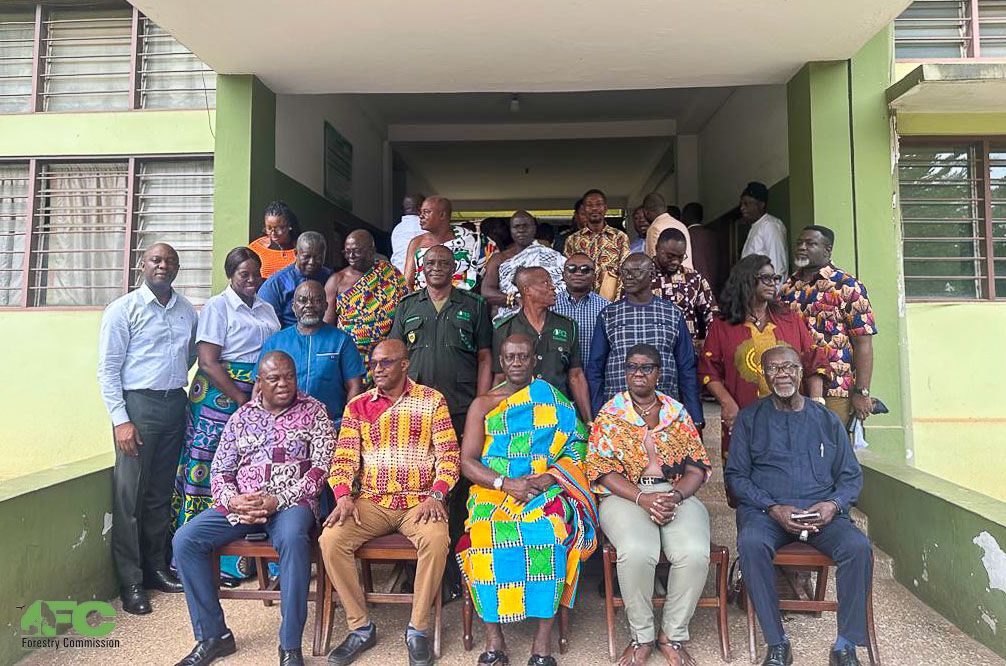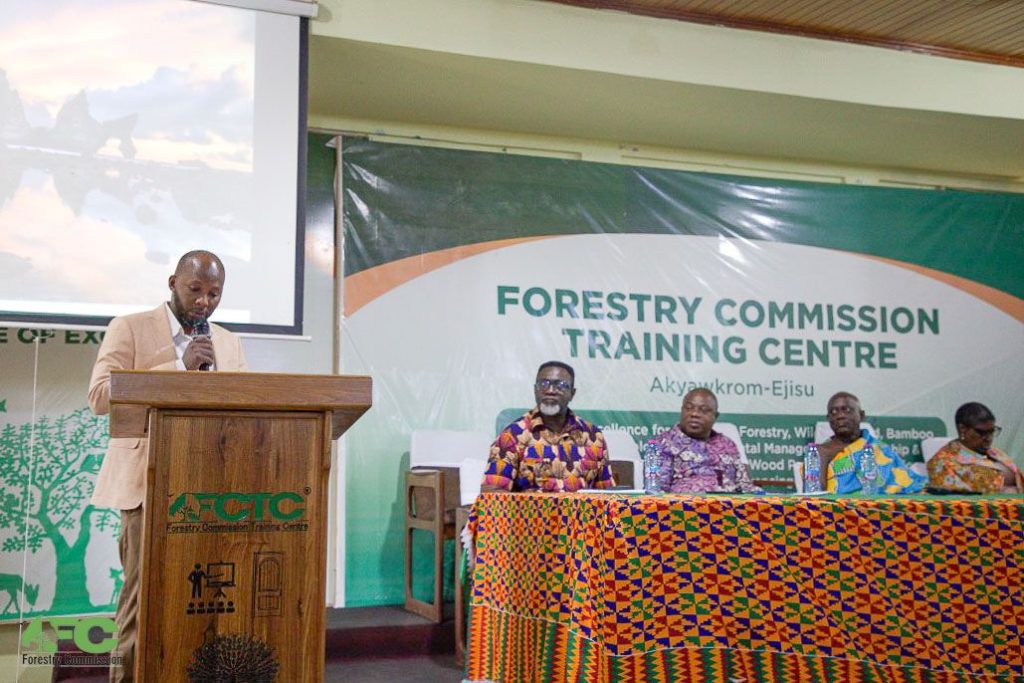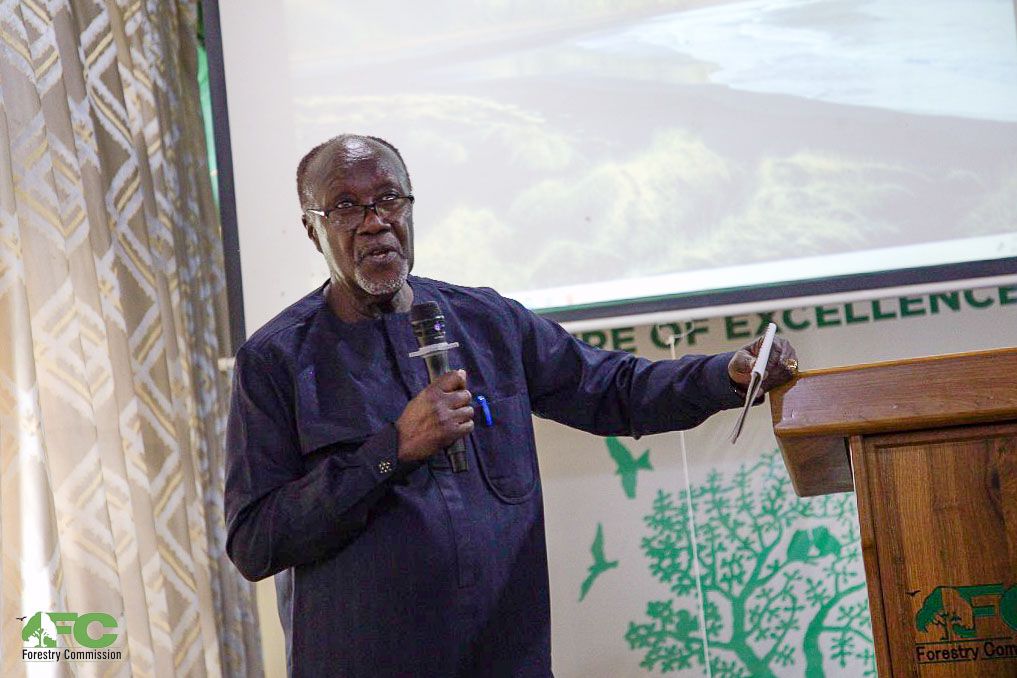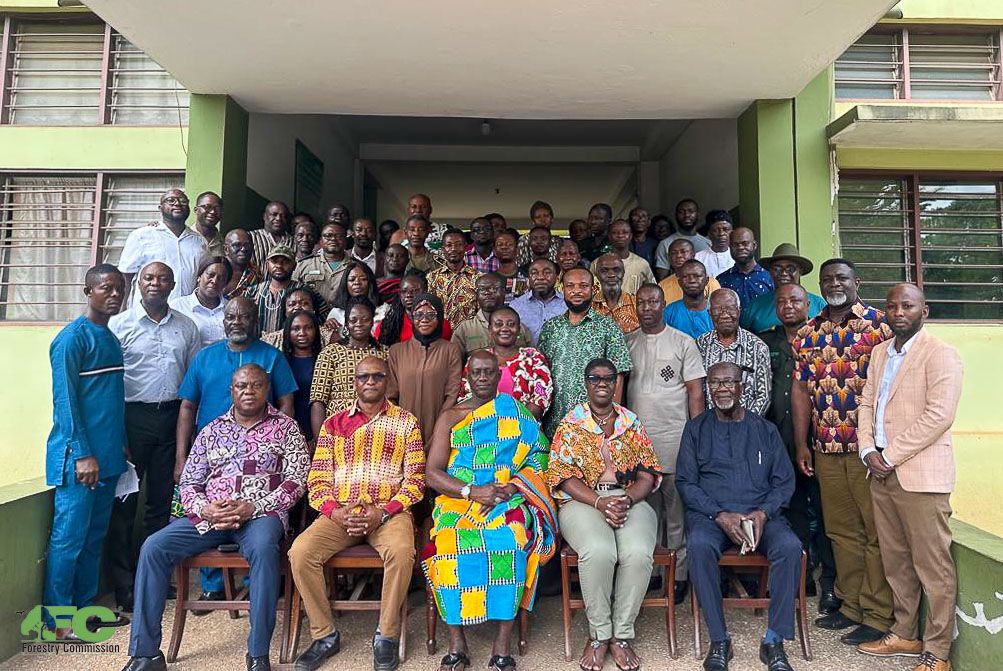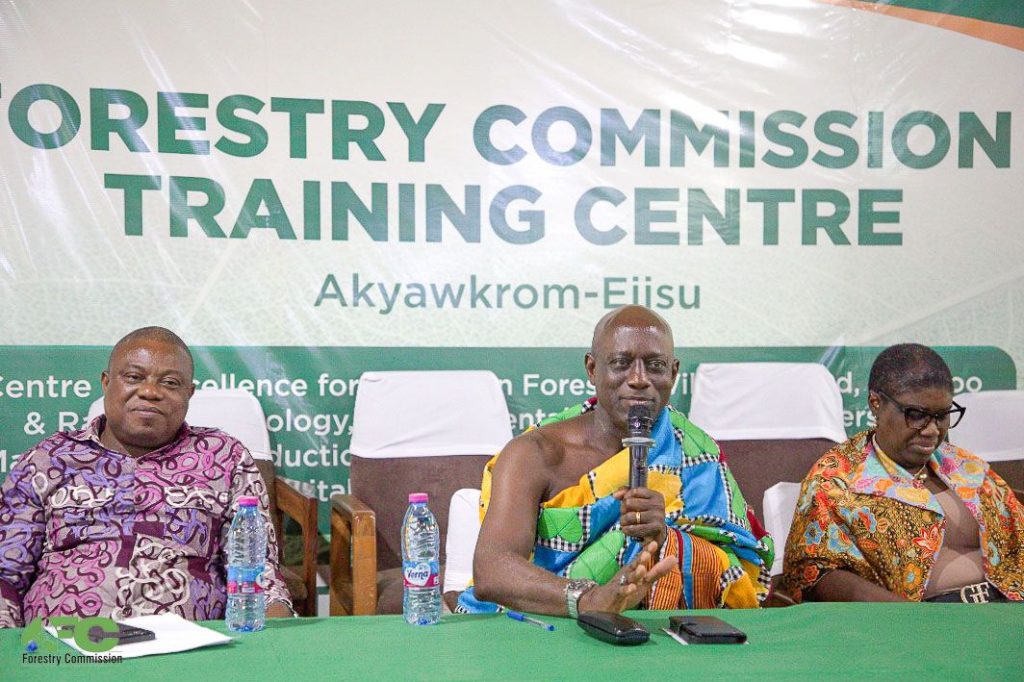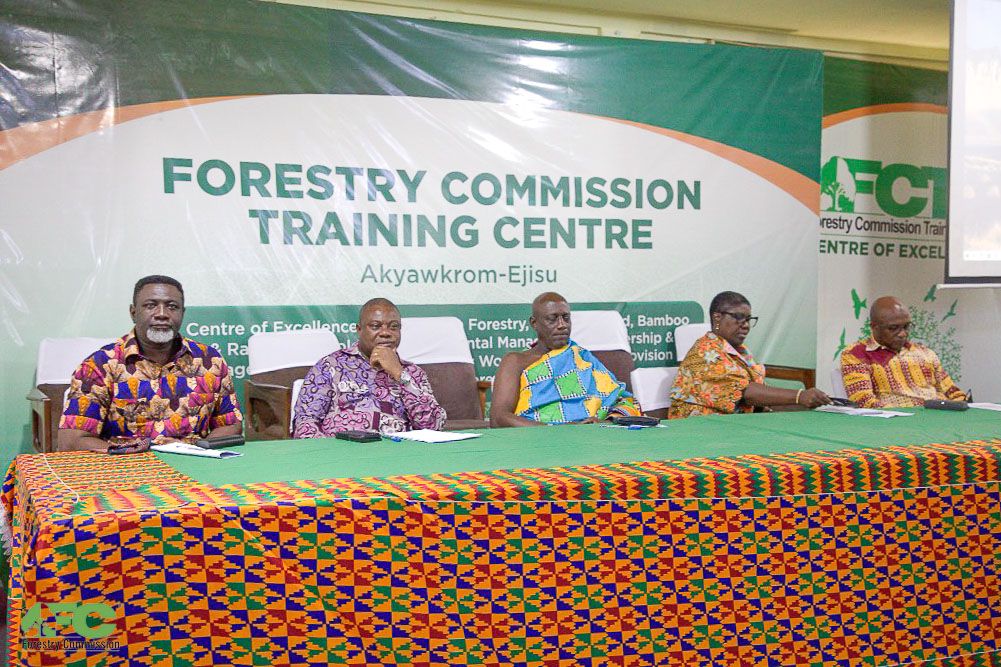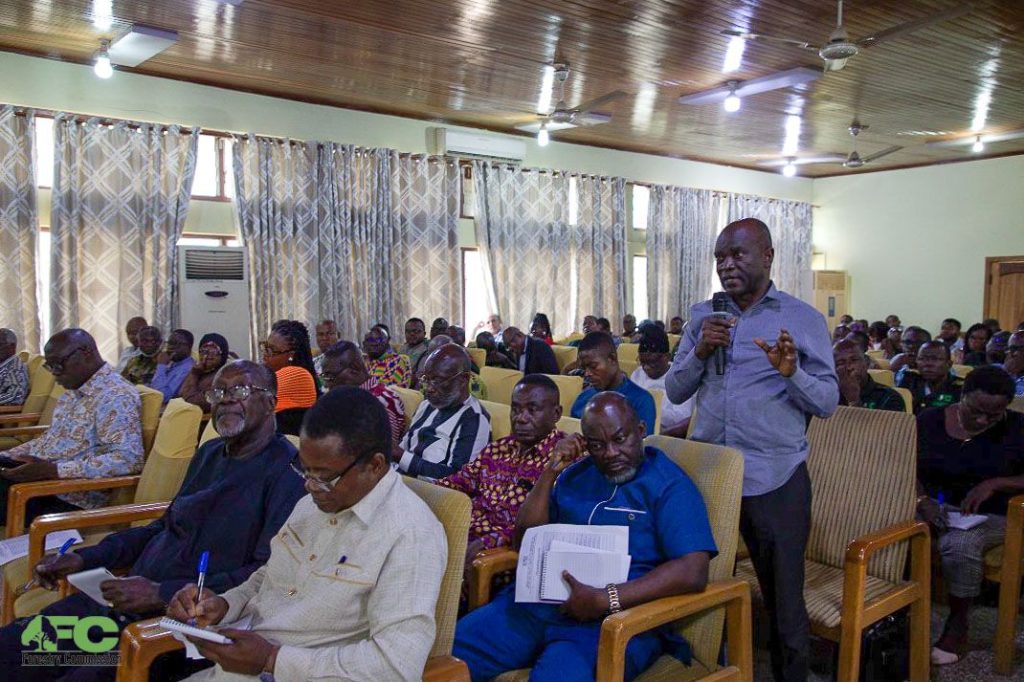The Forest Services Division (FSD) of the Forestry Commission (FC), together with key stakeholders involved in forest landscape restoration, has held a consultative and validation exercise at the Forestry Commission Training Centre (FCTC), Akyawkrom, to critically examine the Ghana Forest Landscape Restoration Strategy (GFLRS). The document, initially revised by the Forest Plantation Technical Steering Committee (FPTSC), was discussed to assess progress, realign objectives, and make recommendations for improvement to ensure the GFLRS continues to meet its objectives effectively.
Developed and launched in 2016, the Ghana Forest Landscape Restoration Strategy (GFLRS), formally known as the Ghana Forest Plantation Strategy (GFPS), is a 25-year strategic plan that is reviewed every five years, to ensure a sustainable supply of forest plantation goods and services. These periodic reviews respond to changing conditions and priorities to maintain the relevance of the GFPS.
The FC Board Chairman, who is also the Paramount Chief of Wassa Amenfi Traditional Area, Tetrete Okuamoah Sekyim II, chaired the event and expressed his enthusiasm about the expertise present for the document review. He was optimistic that the meeting would yield insightful contributions to enhance the GFLRS. He emphasised on the importance of Sustainable Development Goals (SDGs) relevant to the Forestry Commission—Goal 13 (climate action) and Goal 15 (life on land)—and stressed that they should be factored into the revised document.
The Chief Executive of the Forestry Commission, Mr. John Allotey, noted that although the Plan is meant to be reviewed every five years, this meeting marked the first review after seven years. Due to this delay, he suggested that the review period be extended, stating that five years might be too short. Mr. Allotey also highlighted several new projects initiated since the GFLRS was established, including the development of bamboo and rattan industries, the institution of Green Ghana Day (GGD) over the past four years, the publication of the Resilient Ghana document, and the allocation of $7 million to plantation development. He also acknowledged challenges facing the GFLRS, such as competition for land for plantations, agricultural land use issues, and increasing foreign investment in plantations due to interest in carbon trade.
Professor Joseph Cobbinah, charming of the FPTSC, gave a presentation on the Strategy. He outlined its goals, strategic objectives, targets, required resources, and performance indicators to track project progress. He also reviewed other key elements of the strategy, including SWOT analysis, implementation plan, financing, and M&E (monitoring and evaluation) reporting.
There was a break-out session where the participants were divided into six groups to critique the document and offer suggestions to fine – tune the draft revised strategy documents. Each group later presented the outcomes of their discussions.
In his closing remarks, Mr. Hugh Brown, Executive Director for the Forest Services Division, thanked stakeholders for their active participation in the program. He expressed appreciation for the feedback received on the draft and assured participants that all relevant suggestions would be incorporated into the final document, which is set to be launched on November 26, 2024.
The event was attended by experts and industry leaders relevant to forest landscape restoration such as Tropenbos Ghana, Cocoa Board, Academia, the Water Resources Commission, Miro Plantations, Form Ghana, World Resource Institute (WRI) and PADO.
